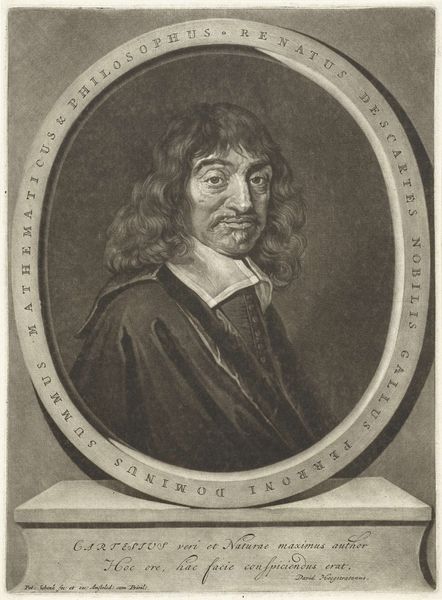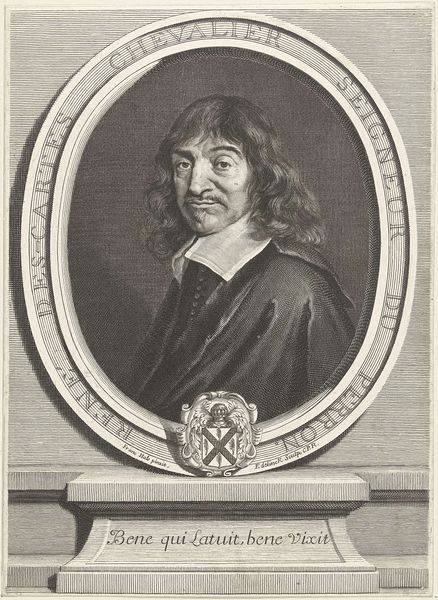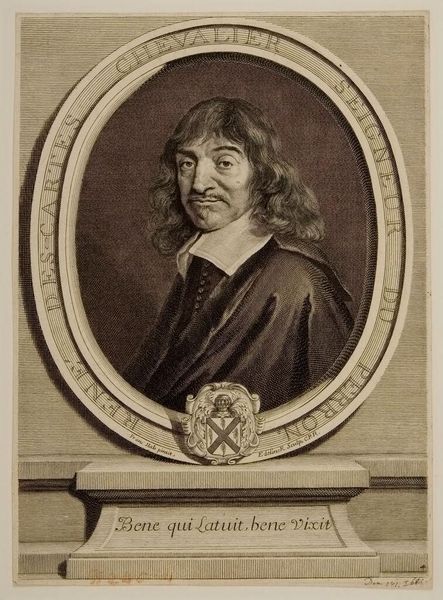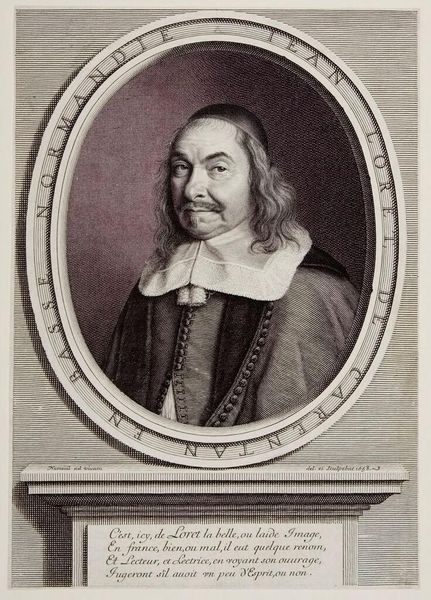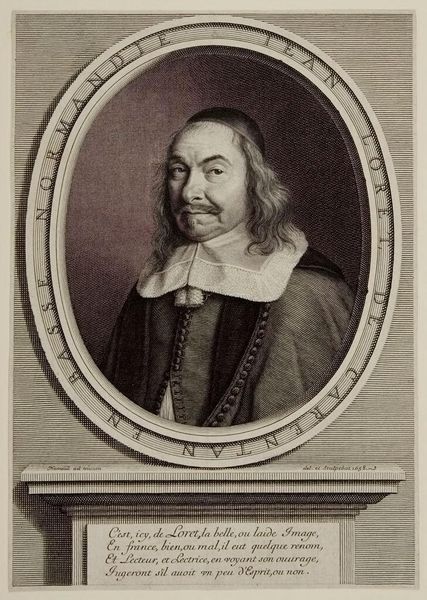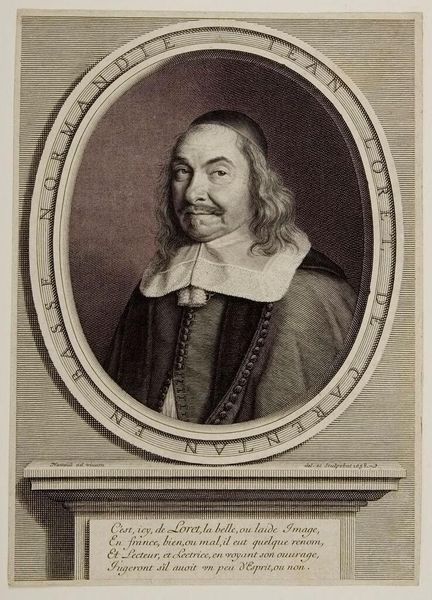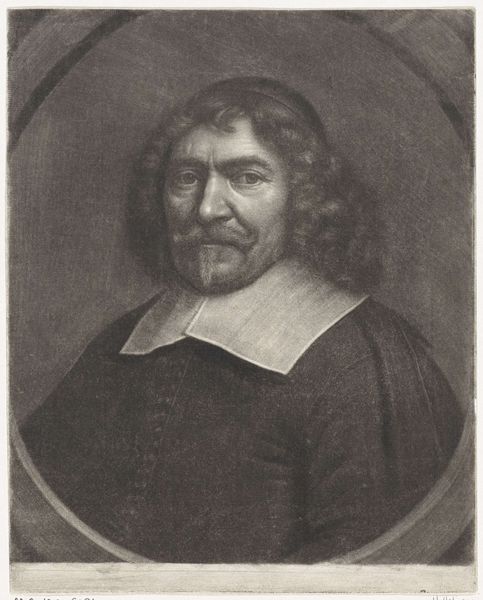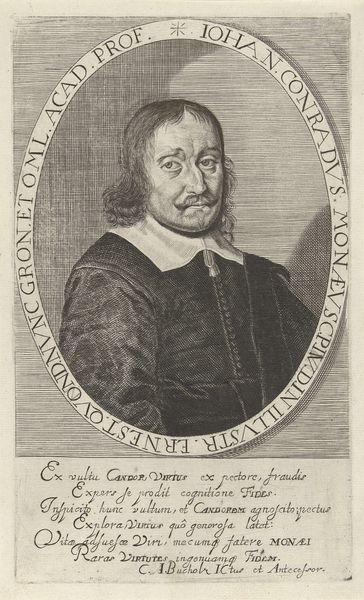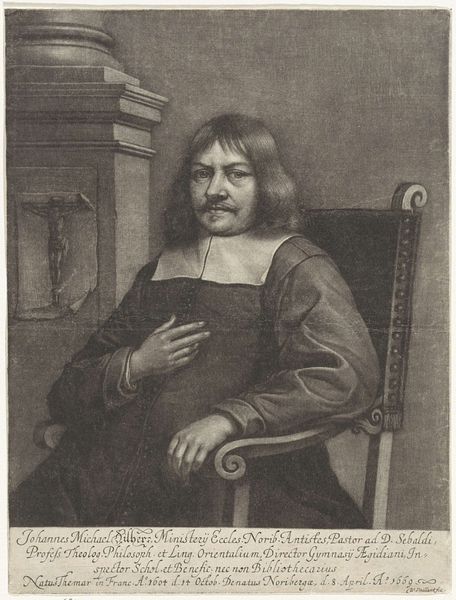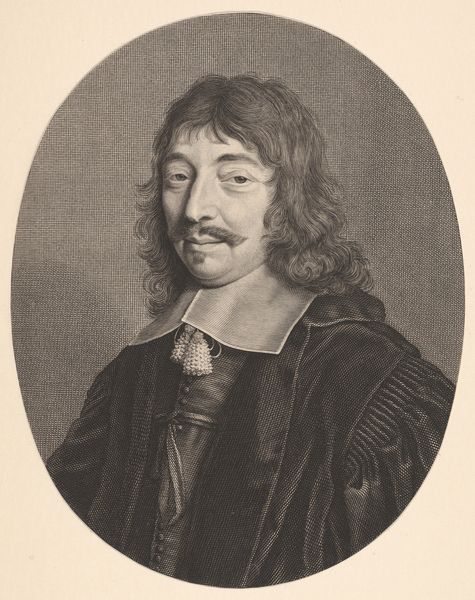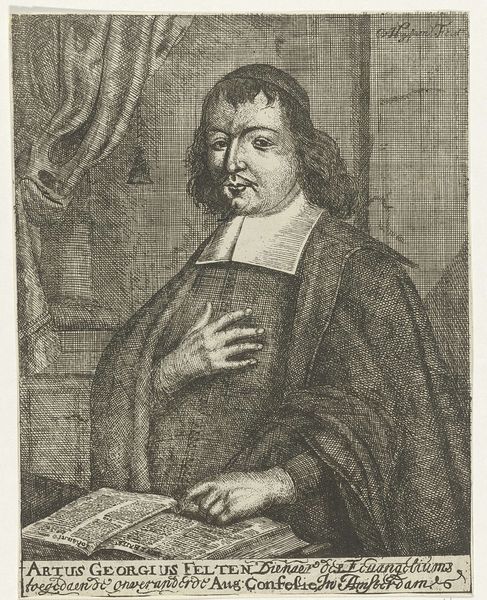
engraving
#
portrait
#
character portrait
#
baroque
#
portrait image
#
line
#
history-painting
#
engraving
Dimensions: height 283 mm, width 211 mm
Copyright: Rijks Museum: Open Domain
This is Pieter Schenk’s engraving of René Descartes, made sometime between 1690 and 1711 in Amsterdam. It depicts the famous French philosopher who spent the last years of his life in the Netherlands. What does it mean to make an image of a philosopher? How should we visualize someone who is known for thinking? In this portrait, Descartes is shown as an upper-class gentleman. His hand casually rests on a ledge, he wears an elaborate costume, and he stares confidently out at the viewer. This is how wealthy and powerful men were typically portrayed at this time. But Descartes also challenged the established social order. His philosophy emphasized individual reason over tradition and religious authority. His ideas helped lay the groundwork for the Enlightenment. To understand this image better, we can research the history of portraiture, the biography of Descartes, and the cultural context of the Dutch Golden Age. By looking at the social conditions that shaped this engraving, we can better understand the public role of philosophy in the 17th and 18th centuries.
Comments
No comments
Be the first to comment and join the conversation on the ultimate creative platform.
